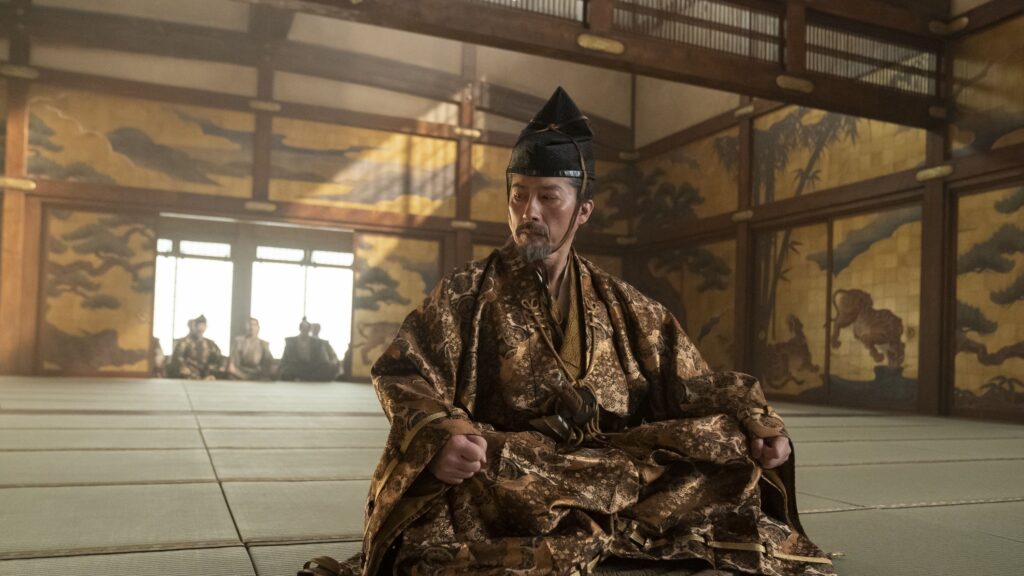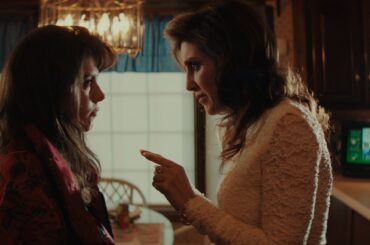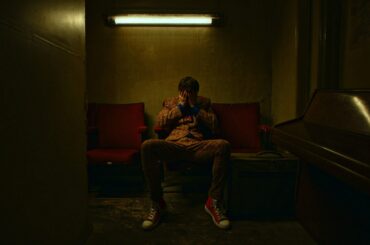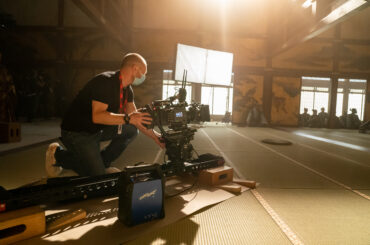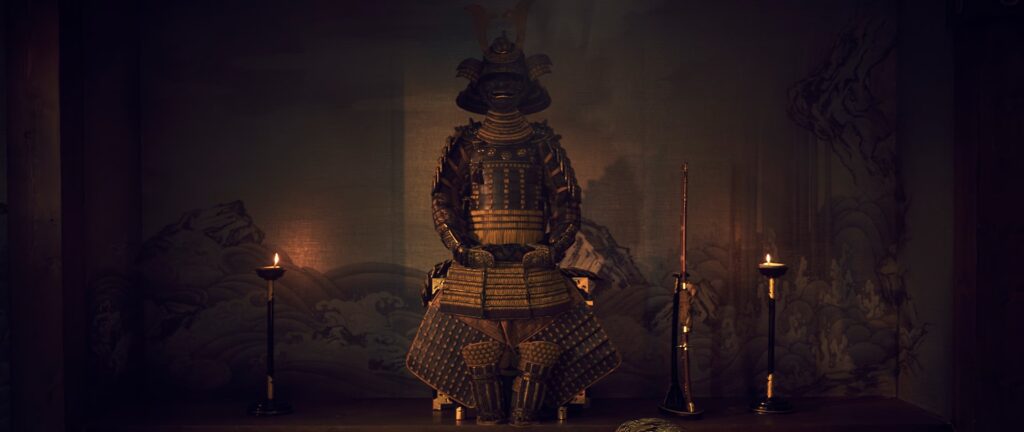
Carlos Rosario and his team went back in time to create an authentic and cinematic portrayal of 1600 Japan in Shōgun. For the large ensemble, as well as the varying degrees of class and rank, Rosario & Co. needed to both dream and plan big. Based on the tactical nature of the show, its costumes defining history and personality, the Shōgun costume designer achieved a remarkable feat with the Emmy-contending, hit FX series.
The series features breathtaking work from behind and in front of the camera.
Immersive Media spoke with a very proud Rosario, who recently thanked filmmaker Fede Alvarez for helping him on his path toward Shōgun. The duo have made four films together, including Don’t Breathe and the upcoming Alien: Romulus. The busy costume designer spoke with us about the level of detail and passion that went into making Shógun.
When you have 2,300 costumes, where do you start?
The armors. Definitely the armors, because I knew that was going to take much more time than anything else, so we needed to put that into manufacturing right away. I started on May 1st, 2021, and the first six weeks were completely only about armors. By mid-June, I had to send all the drawings of all the armors, all the different categories of the armors for each army to the artists, the manufacturing companies that were going to make them. I only had six weeks to do that. It involved a lot of things that I wasn’t familiar with because I’ve never done a show of this magnitude first.
Designing armors is very complicated. It’s very intricate. It has a lot of details you need to understand about construction and fabrics. At the same time, understand all my characters, specifically all my lords, the leaders of each one of those armors. So within those six weeks, I had five illustrators helping me to do all the drawings. I had assistants helping me do all the research. After a couple of weeks, we were ready to have a couple of meetings with the director of the first two episodes and the showrunners and the producers to show them what we did. All those armors and all those drawings basically went through an approval process.
We were also guided by an expert in this period, Frederik Cryns, who is a teacher at the University of Kyoto. And so, he helped us a little bit doing the right research for the armors and sort of went through that approval process to make sure that what we were submitting was correct for the period.
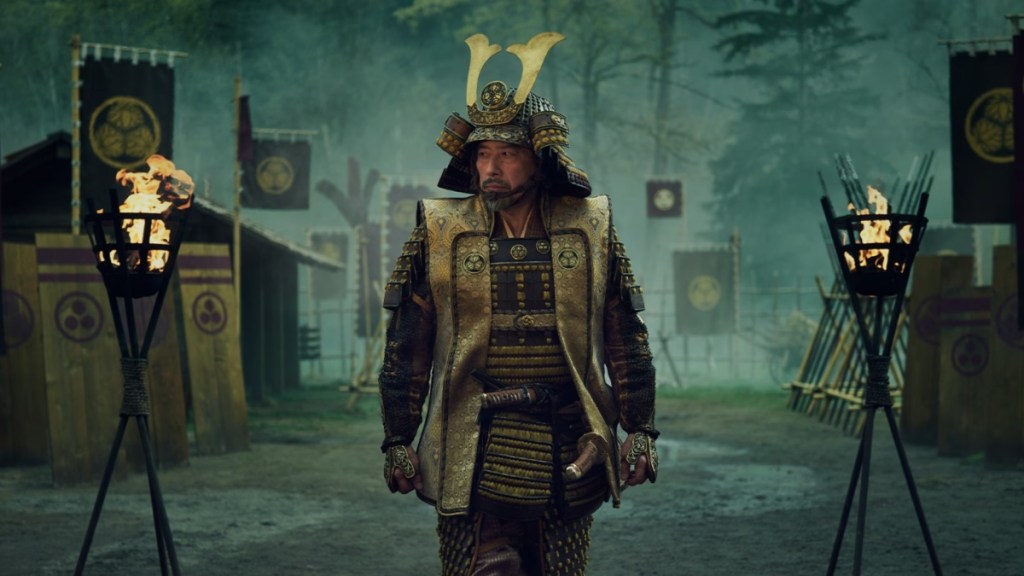
For Toranaga’s armor, there’s a line about how it was thought of in a dream and it spans centuries. How did you create that sense of time and dreamlike quality in the armor?
Well, the most important thing for Toranaga was to make sure that he would look as powerful as possible. I don’t know if you’ve noticed, but in the first episode at least, he is the only character that changes in every single scene. It was actually my concept in the beginning. Everybody was like, “We just started, there is so much work to do. Why do you want to make yourself your life complicated?” But I felt it was really important for every single scene. All the scenes are different, too. There is the hunting scene, there is the ceremonial scene, then he’s on the field, then he’s in different locations.
So it makes sense, but at the same time, all the other characters don’t change. He’s the only one that changes. My concept was that it was to show how wealthy and powerful he was. By extension, his beautiful armor, his armor needed to be way more elaborated than all the other ones.
We spent a lot of time in all the different details in his armor and whether we designed sort of iron pieces that were part of the sleeves, the helmets. I mean, we went all the way to make sure that his crest was very apparent everywhere on his armor. But most importantly, I feel like the pieces that really define his power and his wealth.
When making these costumes, did you and your team want to employ techniques they used back then?
Of course. For everything, there is a lot of handwork. For all the armors, at least for the main characters, were all done by hand. Also, you have to take in consideration that I decided to make them in leather, which is very unusual. Usually, all the Japanese armor are mostly in iron. They’re very heavy, they’re in metal. I felt that that was not really how I wanted to portray this period. I felt like all those armors were more adequate, although they existed in the Sengoku period, I felt like they were more of what we envisioned for the Edo period. Later on, they’re shinier for this. I wanted something that was more rustic and something that would also really break down much better.
And so, I thought that the leather would be the way to go. When you get into leather, it’s a lot of handwork. We actually couldn’t find the right color for all the leathers, so what we did is actually we bought white leather and we painted it by hand to get exactly the right color, the right brown, the right red, the right green. In my understanding, it’s a more sort of crafty way to do things the way it would’ve been done in that period.
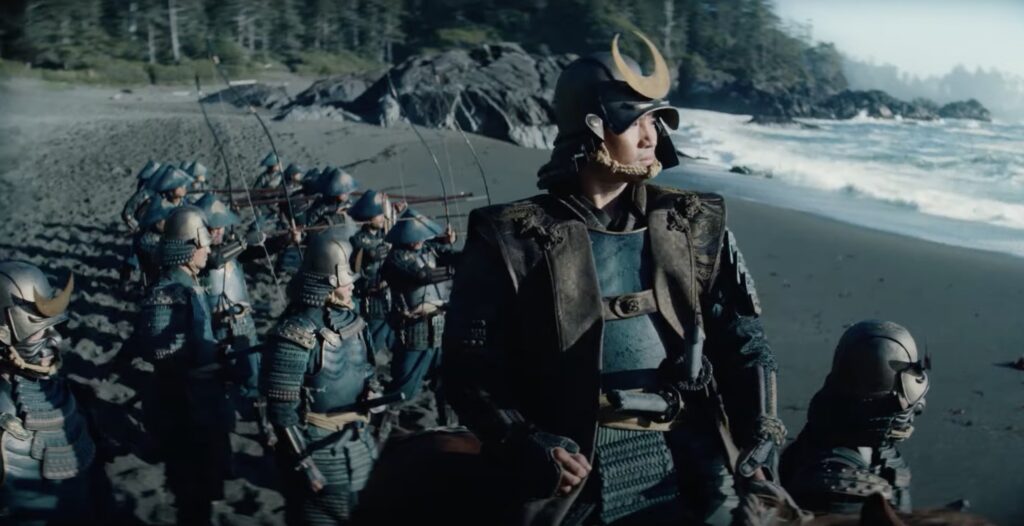
I imagine a lot of stunt performers appreciated you went with the leather.
They were super happy. Mr. Sanada kept saying that was the lightest armor he’s ever worn. It was really nice because once you put that armor, it takes two, three people to put an armor to help dress for 45 minutes to an hour. So once you have it on, you have to keep it for a couple of hours.
It was light and it was easy to break down. At the same time, to be honest, they didn’t complain much about all the different layers because it was so cold in Vancouver. They didn’t even need the warming coats because they were warm with all those armors and all those layers. So it was multi-functional in a way.
Many of these costumes, obviously not a lot of them, but a few of them have this deceptive simplicity where you just know there has to be so many layers.
I’m glad you’re saying that, because I felt the same way when I started the project. We started doing research, and then we see the silhouettes for the ladies, the silhouettes for the men. And when you look at it, there is only three, four silhouettes on each side. It’s very simple, but then when you get into it, it’s very complex.
For the armors, I never counted the pieces for each armor, but for the premiere of Shōgun, I had to do some events where we had to dress mannequins with all the lords’ armors. I counted almost 40 pieces for Toranaga’s armor. It’s just nonstop. There are so many different layers. It looks simple on the outside, but it’s not that simple. It might be light, but it’s still complicated to put together.

There are obviously rules for the kimonos, which changed throughout time. What rules did you and your team follow?
So we had to work with the ancestor of the kimono is called the kosode. Everybody on this show, because it was the single period, had to work. So the kode is sort of like the kimono, but it has a different shape. It’s basically much wider. Because it’s much wider, the sleeves are shorter. And so, the proportions silhouette is slightly different from the kimono. We get closer to our period, the kimono got closer and closer to the body.
What we did is that we rented a lot of pieces from Japan in the beginning so we could understand the silhouette, the shapes, the volumes of those pieces of that period, but also in terms of the pattern making, the architectural aspect of it. We would make the clothes the same way the Japanese made their clothes.
We did literally hundreds and hundreds of custodians, but always in different fabrics. But in that sense, that piece is the easiest piece to manufacture. Then when you get into the hakama pants, it’s much more complicated. You have all the pleats when you get into all the uchikake for the ladies, it’s so much more elaborated, it has more embroidery and all that, more layers.
Not only important what is worn, but how it’s being worn. What conversations did you have with actors about authenticity when it came to how the characters should move?
I always say that as a costume designer, it’s not about me. It really is about creating a character. In order to create a character, you need to collaborate and communicate with your actors. You want to make sure that they’re seen, that they’re supported in their vision.
As a costume designer, I can bring them my research, my understanding of the character and give them my creative ideas. But it really is about communication and collaboration between all of us, including my collaboration with the showrunner, Justin Marks, and the producers, and the directors of every episode, it’s a constant communication and conversations to be able to find a common ground in what we feel are the right elements that we need to design to create the costumes for each character.

How about collaborating with Usami Fuji? What did you two discuss about presenting Lady Ochiba?
For example, for Lady Ochiba, a conversation that I had with her in the beginning, I asked her, how do you see Lady Ochiba? She told me, “A mixture of grief and of power.” I thought that was really interesting. That was enough for me to understand how she envisioned Lady Ochiba. And so, that’s what I did throughout the 10 episodes. I really needed to show through her costumes that she was above everybody else. So I went all the way in terms of the most luxurious, beautiful fabrics. There was a lot of embroidery, a lot of hand painted work, many layers too, because she was of the highest ranks. I gave her four or five layers as opposed to Mariko, who was maximum three. And then you have the peasants ladies who only have one.
Zori, for example, the sandals that Lady Ochiba wears, she actually requested that her’s should be the highest ones. So, that’s how I interpreted her concept of a powerful lady Ochiba. In terms of the grief, it’s different. The grief to me, the way she said that, it’s because the Taiko passed away. And so, she’s not as powerful as she used to be, and that’s the reason why she’s trying to find where she belongs in the middle of all those powerful dynamics between all those lords. So, I went into autumn colors and fall. To me, fall represents sadness and grief.
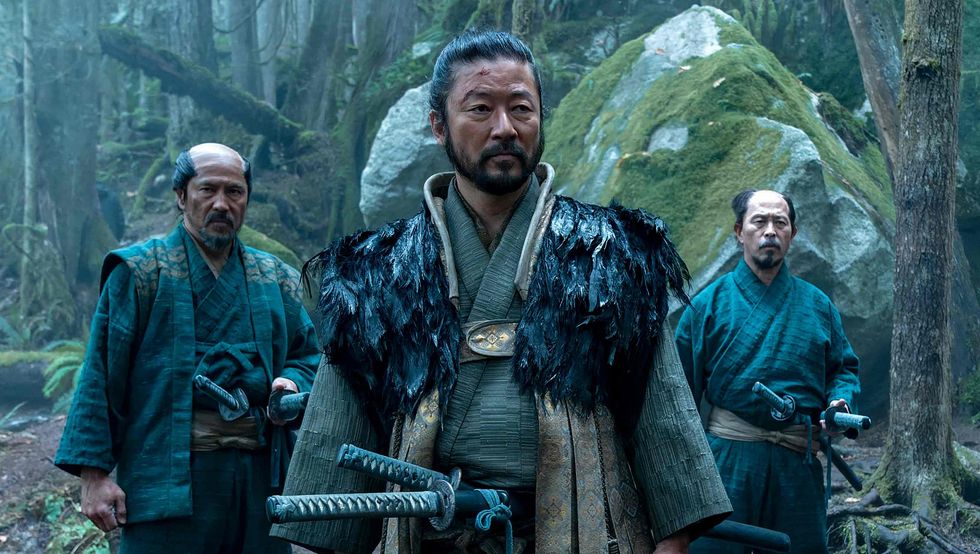
You worked with a team of 250 people in several different countries. When you’re working at the scale as a costume designer, how do you try to be a good leader? How do you effectively communicate vision?
I love that question because yes, in Vancouver, we had about 125 people working with us directly with me. And then internationally, yes, maybe 250 or 300 people because it takes a lot of people to make those armors. We had a team in Thailand making all the costumes for the background. And then we had a team in Japan looking for the fabrics too. So in total, we were maybe two 50 or 300.
I think that there is a couple of things. I had wonderful assistance. Usually I always hire one assistant on this one, but the show was so big that I decided to have three assistants. And so, that really helped me tremendously because I gave to each one of them the responsibility of a list of specific actors.
TV goes very, very fast. You need to learn how to delegate in order to just move to the next thing. You have literally five minutes to design it. You have to make it. It’s approved. You move to the next thing. To me, to know that I had such talented assistant designers being my extension really helped me to trust them and make sure that they were going to follow up with all the details from the beginning to the end, from the beginning where we start the concept of the costume all the way to the moment where actually the costume is established on set if I’m not able to be there.
In terms of the rest of the crew in Vancouver, I have to say that it was probably the most professional crew I’ve ever worked with. Everybody was so passionate about this job that sometimes I found myself in the middle of fights between different teams fighting for one specific costume. Even at the end where everybody was tired, people were still like, “No, no, I’m going to do it. I’m going to do it.” Everybody was really willing to do their best.
I have great coordinators, and I have great supervisors. It really is all about delegating and really trusting your team because there is no way you can do it on your own. So this is a group effort.
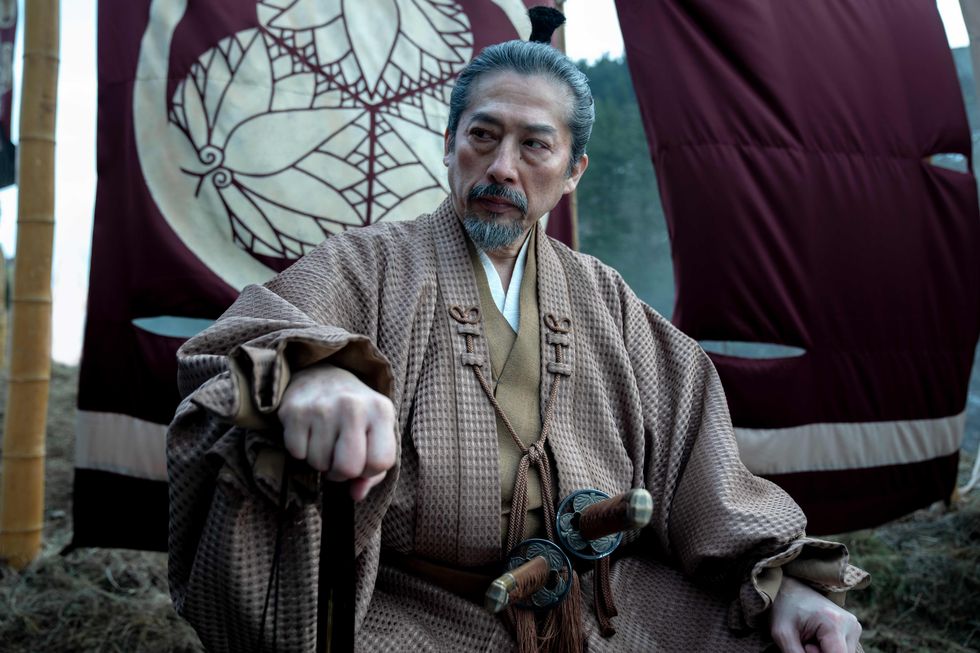
How about your conversations with Akira Kurosawa’s daughter, costume designer Kazuko Kurosawa (Tokyo Voice)? What were some questions for her? What were helpful answers?
I spoke with her in the beginning. I had a Zoom call with her, and of course, I was very excited. I think that what came up to me that really during that conversation that was really helpful were two things. First of all, I asked her the question of how do the Lords dress when they go to the villages on location, on the field? Because in my head I thought, well, if they’re going outside the castle, I assume they’re going to tone down their clothing. She actually told me the contrary.
She actually said, “When they are actually going to the countryside, that’s actually when they love to show off their wealth, their power. In no way you should diminish the beauty of your costumes. You need to go all the way. It was a moment in which the Lords really wanted to show how wealthy they were.” She helped me to understand the logic behind how they dress on the field, because in Osaka, in the castle, it was pretty clear that everybody wanted to wear the best clothing, but I wasn’t sure about what they would be wearing on the field.
The other thing is that I asked her about the jinbaori, and she said to me that actually during the Sengoku period, the rules are not as strict as the other periods. It’s a period of transition of 30 years. She told me, “When you design your jinbaori, have fun. There are no rules, just the way Japanese costume designers have been designing. Jinbaori are very creative.” And so that, for a designer, was a treat and I just ran with it. I loved to design it, because it really helped me create another layer for the character.
Shōgun is now available to stream on Hulu.


